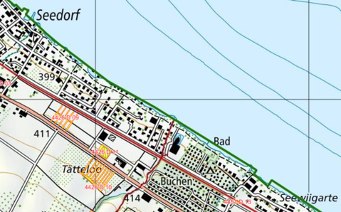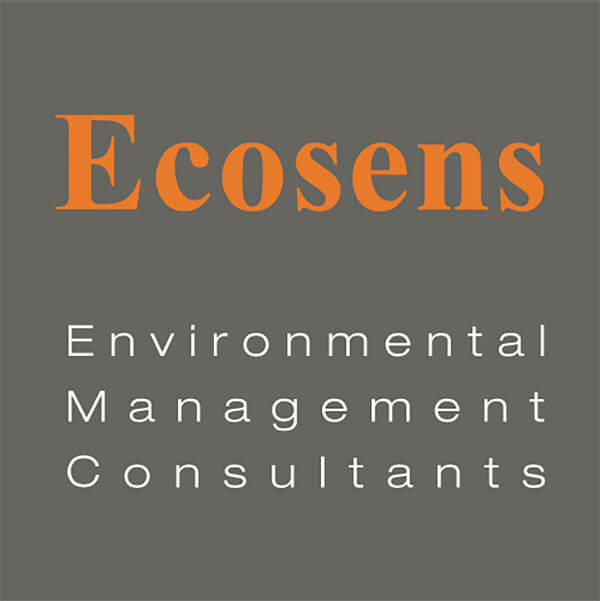Significant change in practice by the Federal Supreme Court regarding entries in the register of contaminated sites
The practice of the Office for the Environment of the Canton of Thurgau is protected by the Federal Supreme Court
At the end of the 1980s, two landowners in the canton of Thurgau had garbage slag installed on their properties with the approval of the then Office for Environmental Protection and Water Management, e.g. for paving paths and parking spaces for plant containers. In 2019, the Office for the Environment of the Canton of Thurgau (AfU) therefore ordered the properties to be entered in the Cadastre of Contaminated Sites (KbS). The landowners fought against these cadastral entries all the way to the Federal Supreme Court - but without success. Their appeals were rejected in a ruling dated November 25, 2021 (BGer 1C_712/2020 and 1C_714/2020). Ecosens AG supported the AfU in these two appeal proceedings and thus contributed to a change in practice in the case law of the Federal Supreme Court.
Does the (previously permitted) installation of municipal solid waste slag constitute a KbS entry?
In the two rulings, the Federal Supreme Court had to decide whether the plots of land after the installation of municipal solid waste slag are polluted sites within the meaning of Art. 32c para. 2 LPE that must be entered in the KbS. The LPE distinguishes between landfilling on the one hand and the recovery of waste on the other (Art. 7 para. 6to USG). According to Art. 2 para. 1 lit. a AltlV, sites where waste is deposited as polluted sites. Art. 30 para. 2 USG stipulates that waste must be recycled as far as possible. Through recycling, a movable object is returned to the economic cycle and is therefore no longer considered waste. Against this background, the previous case law of the Federal Supreme Court considered that the use of material which actually fulfills the objective definition of waste, but which was used and installed for a specific purpose and precisely because of its properties, is to be regarded as a waste. Utilization and is therefore not a polluted site to be entered in the KbS (see BGE 136 II 142; BGer 1C_609/2014; BGer 1C_537/2016 and BGer 1C_547/2016).
In their appeal against the KbS entry, the appellants argued that the waste incineration plant had made the slag available to them due to its positive properties as a building material in order to reintroduce it into the economic cycle. In its current state, it could not endanger the environment either, as it had been provided with a covering layer and installed at a sufficient distance from the groundwater. The structural utilization of the waste slag was permissible under the law in force at the time and had been approved by the competent authority. The FOEN supported the arguments of the two complainants that, due to its positive properties, the municipal solid waste slag was used as a reinforcement material within the meaning of Art. 13 aTVA and was therefore not a landfill site pursuant to Art. 2 para. 1 lit. a AltlV.
The AfU justified the KbS entry by stating that waste slag should primarily be classified as waste and not as a building material due to the environmentally hazardous substances it contains. It would contradict the purpose of the law on contaminated sites not to enter a site contaminated with waste in the KbS because the waste was recycled there and not deposited, especially as the recycling of waste slag is no longer permitted under current law. The only decisive factor is that the incorporated material is waste, whereby the reason why it was incorporated is not decisive.
Important change in the case law of the Federal Supreme Court
The Federal Supreme Court considered that the waste slag in the present case was installed for a specific purpose due to its special properties and that, according to previous Federal Supreme Court practice, this use constituted the recovery of waste within the meaning of Art. 7 para. 6 of the Waste Ordinance.toUSG should be qualified. However, the court agreed with the AfU that, with regard to the purpose of the KbS, it was not clear why a distinction should be made between materials containing pollutants that have entered the subsoil as a result of utilization that is no longer permitted today or as a result of deposition. Even in cases where no investigation, monitoring or remediation measures are necessary, the entry in the KbS provides indications of contamination of the subsoil and thus ensures that the necessary precautions for the treatment and disposal of waste are taken in the event of construction measures. Furthermore, it is often no longer possible to retrospectively assess whether backfilling in the subsoil was primarily for recycling or disposal, as both objectives were usually pursued simultaneously.
The current waste legislation considers any permissible (i.e. environmentally compatible) use of waste as a building material to be "recovery" - regardless of the primary purpose for the waste holder or the presence or absence of specific material properties - and only disposal in a landfill is considered to be "landfilling". According to the VVEA, uncontaminated (A-material) and slightly contaminated material (T-material) can be incorporated or recycled; however, heavily contaminated material is generally subject to a recycling ban (Art. 19 para. 3 VVEA) and must be disposed of in a landfill.
For these reasons, the Federal Supreme Court decided to reconsider the previous differentiation between recovery and landfilling in the context of Art. 2 para. 1 lit. a AltlV, insofar as it concerns pollutants that end up in the subsoil as backfill or consolidation material. From now on, the decisive factor for a KbS entry should be whether the use of the material for filling or consolidation would be permissible from today's perspective. According to the current legal situation, the use of slag to reinforce paths and squares no longer constitutes environmentally sound waste recycling and the slag must be deposited in landfills. Therefore, according to the Federal Supreme Court, the parts of the plots paved with MSWI slag are to be qualified as polluted sites within the meaning of Art. 32c USG and Art. 2 para. 1 lit. a AltlV, which results in a KbS entry. It is not decisive that the site does not require monitoring or remediation, as Art. 32c para. 1 and 2 USG only refers to the contamination with waste. According to the Federal Supreme Court, it is also not decisive that the slag was installed with the approval of the competent authority at the time.
On the same day, the Federal Supreme Court also ruled on another similar case in the canton of Solothurn, where the amended practice was also applied (BGer 1C_566/2020). The change in the Federal Supreme Court's case law is likely to have an impact on the enforcement practice of the cantonal authorities, some of which have previously entered fillings with T-material in the KbS. Some KbS entries could therefore be deleted again. However, the differentiation between "recovery" and "disposal" in the context of Art. 2 para. 1 lit. a AltlV should now be easier for the cantonal authorities to make thanks to more objective criteria.

